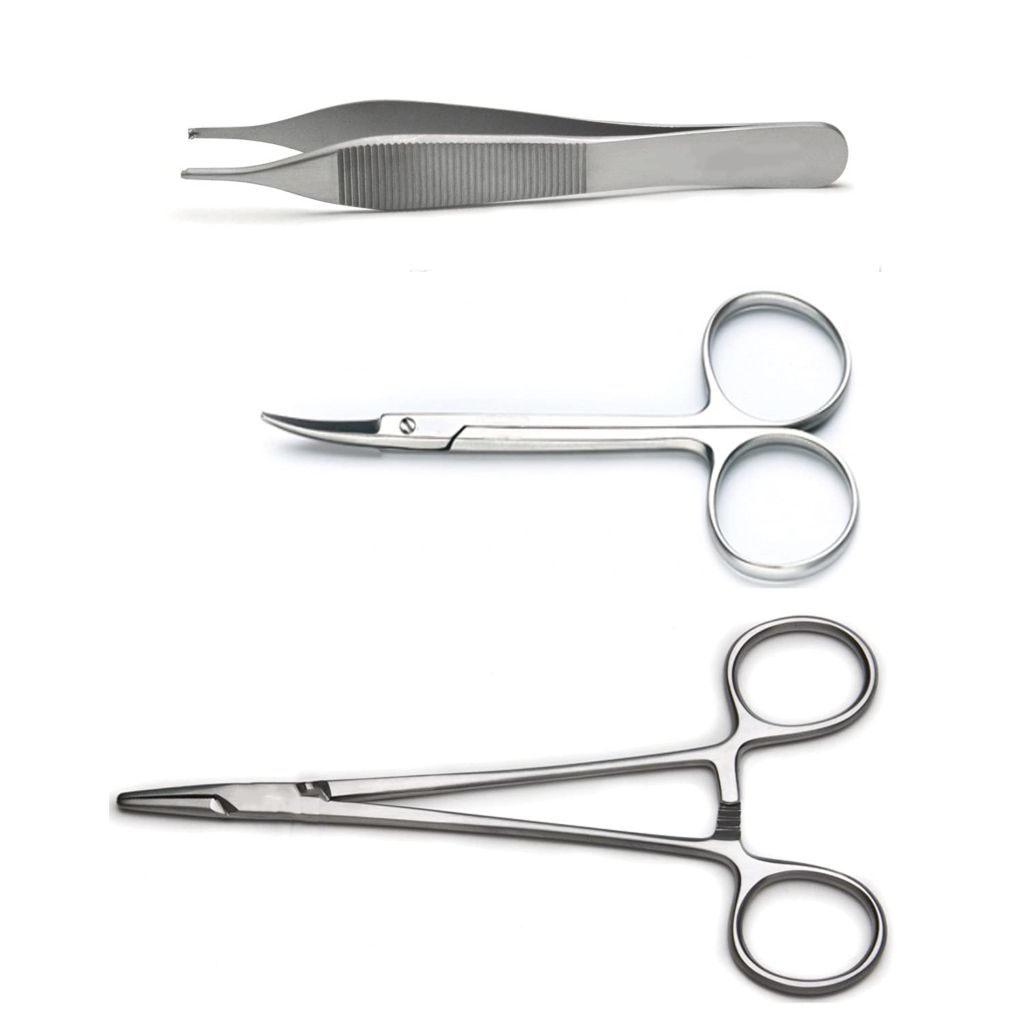GDA Nursing Class Notes 8

INCISION
An incision is a surgical cut or intentional opening made in the body’s tissues during a medical procedure. It is performed by a healthcare professional using specialized instruments, such as scalpels or lasers, to gain access to underlying structures for various purposes, including surgical interventions, medical examinations, or treatments. Incisions are carefully planned and executed to minimize tissue damage, control bleeding, and ensure optimal healing.
TYPES OF INCISION
There are several types of surgical incisions, each designed for specific procedures and purposes. The choice of incision type depends on factors such as the nature of the surgery, the location of the target area, and the surgeon’s preference. Here are some common types of surgical incisions:
1. VERTICAL INCISION: A vertical incision, also known as a midline vertical incision or a midline sternotomy, is a type of surgical incision made vertically in the midline of the body. This incision is typically done in the anterior (front) aspect of the body and extends from just below the sternum (breastbone) down to the pubic bone or even further, depending on the surgical procedure’s requirements.

2. TRANSVERSE INCISION: A transverse incision, also known as a horizontal incision, is a surgical cut made horizontally across the body. This type of incision is commonly used in various medical procedures to provide access to underlying structures while minimizing the risk of complications and improving cosmetic outcomes. Transverse incisions are often preferred for their ability to heal with less tension and create less noticeable scars compared to vertical or diagonal incisions.

3. OBLIQUE INCISION: An oblique incision is a type of surgical incision made at an angle to the body’s midline or to the direction of a specific anatomical structure. This type of incision is often used in surgical procedures where access to specific structures or areas is required while minimizing complications and optimizing exposure. Oblique incisions can offer advantages in terms of improved access and reduced wound tension compared to other types of incisions.

SUTURE
Sutures, commonly known as stitches, are medical threads used to hold together the edges of a wound or incision after surgery or an injury. Suturing is a critical aspect of wound closure, aiding in wound healing, reducing the risk of infection, and promoting proper tissue alignment. Sutures can be made from various materials, and the choice of suture type depends on factors such as the type of wound, the location, the patient’s condition, and the surgeon’s preference.
Types of Sutures: There are several types of sutures available, including absorbable and non-absorbable options. Absorbable sutures break down over time within the body and do not require removal. Non-absorbable sutures need to be manually removed by a healthcare professional once the wound has healed.

SUTURING KIT
A suturing kit, also known as a suture kit or suture removal kit, is a collection of medical tools and supplies specifically designed for the process of suturing wounds or removing sutures. These kits are used by healthcare professionals, including doctors, nurses, and medical students, to perform wound closure or suture removal procedures accurately and safely. Suturing kits typically contain a variety of instruments necessary for these tasks. Here are the common components you might find in a suturing kit:
- Suture Material: Depending on the kit’s purpose, it may include various types and sizes of suture material, both absorbable and non-absorbable. This can include materials like nylon, silk, or synthetic options.
- Surgical Scissors: Specially designed scissors with fine, sharp blades for cutting sutures and other materials precisely. There may be curved and straight scissors for different applications.
- Suture Forceps or Pickups: These instruments have delicate tips that allow for grasping and manipulating sutures and tissues without causing damage.
- Needle Holder: Also called needle drivers, these instruments provide a secure grip on the suture needle, allowing for precise placement during suturing.
- Tissue Forceps: Similar to suture forceps, tissue forceps have teeth or a textured grip that holds onto tissues securely for manipulation.

SUTURING TECHNIQUE
Suturing is a skilled technique used to close wounds or surgical incisions, promoting healing and reducing the risk of infection. Different suturing techniques are employed based on the type of wound, its location, and the desired cosmetic outcome.
Simple Interrupted Sutures:
- Each suture is placed individually, creating a series of knots to close the wound.
- Provides excellent wound edge alignment and control.
- Often used for wounds that require precise alignment or when cosmetic outcomes are important.

Continuous Sutures (Running Sutures):
- A continuous length of suture material is used to close the wound, with a single knot at the beginning and end.
- Faster than interrupted sutures, but if one section fails, the entire line can unravel.
- Commonly used for long, linear wounds like those from surgical incisions.

Running Locking Sutures (Continuous Locking Sutures):
- Similar to continuous sutures, but each suture is locked in place with a half hitch.
- Provides added security compared to simple continuous sutures.

· Vertical Mattress Sutures:
- Involves placing sutures that create a “X” pattern on the wound edges, like a mattress.
- Provides excellent wound edge eversion (flipping outwards) and good wound edge approximation.
- Useful for areas under tension or for wounds that require additional support.

Horizontal Mattress Sutures:
- Similar to vertical mattress, but sutures are placed parallel to the wound edges.
- Offers wound edge eversion and good wound closure, especially useful for deep wounds.

Subcuticular Sutures (Intradermal Sutures):
- Sutures are placed within the subcutaneous tissue, just below the skin surface, to eliminate the need for external knots.
- Offers excellent cosmetic results as knots are hidden beneath the skin.
- Commonly used for cosmetically sensitive areas.

Intradermal sutures:
- A type of suturing technique used to close wounds below the skin’s surface.
- This technique is often favored for its cosmetic benefits, as it minimizes the appearance of sutures on the skin’s outer surface.
- Intradermal sutures are commonly used in surgeries where aesthetics are important or in areas where wound tension is minimal.

